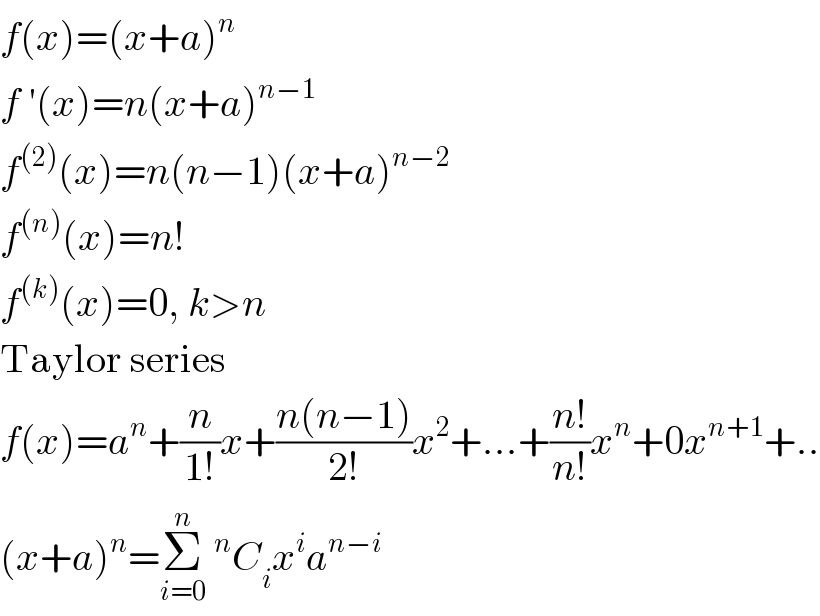
Question and Answers Forum
Question Number 3411 by Filup last updated on 13/Dec/15
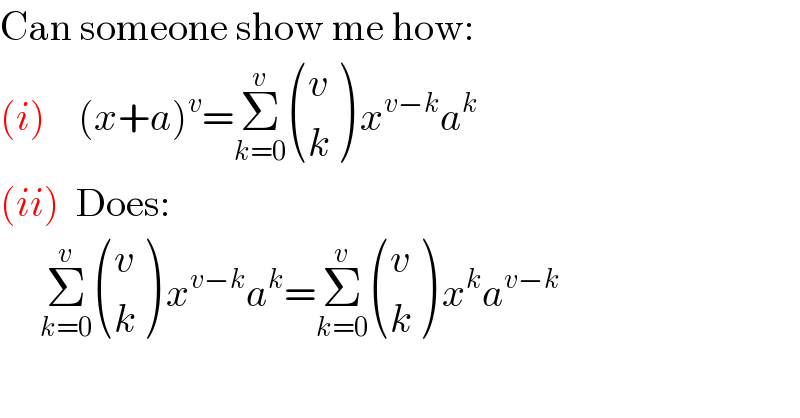
Commented by RasheedSindhi last updated on 13/Dec/15
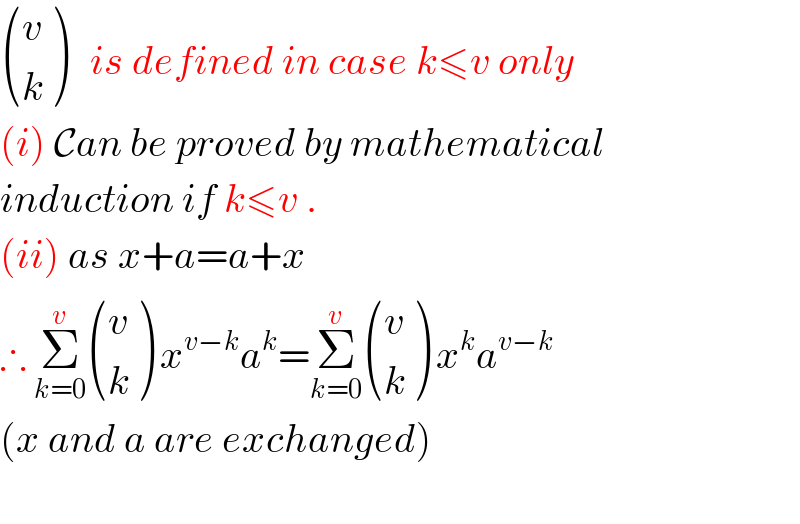
Commented by Filup last updated on 13/Dec/15

Commented by 123456 last updated on 13/Dec/15
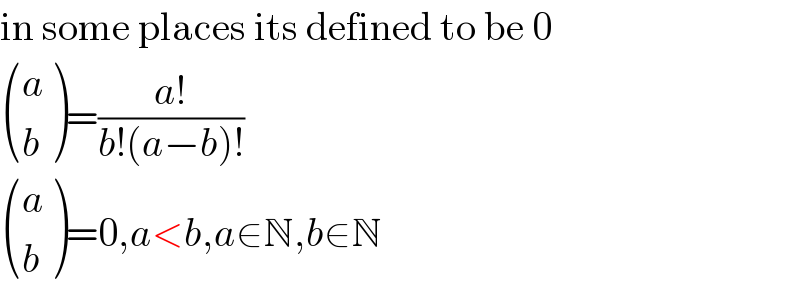
Commented by RasheedSindhi last updated on 13/Dec/15

Commented by 123456 last updated on 13/Dec/15

Commented by Filup last updated on 13/Dec/15

Commented by Yozzi last updated on 13/Dec/15

Commented by 123456 last updated on 13/Dec/15
![for curiosity there some reaction to take ((a),(b) )=0 a∈N∧b∈Z∧(b<0∨b>a) we have ((a),(b) )=((a!)/(b!(a−b)!))=((Γ(a+1))/(Γ(b+1)Γ(a−b+1))) x!=Γ(x+1) the poles of Γ(x) are {...,−2,−1,0} so the poles of x! are {...,−3,−2,−1} so if b<0 we get a pole at b! if a<b⇒a−b<0 we get a pole at (a−b)! so its act like ((a!)/(x!(a−x)!))=(k_1 /(±∞k_2 ))=0 however this is if we take the result of limit as (a,b) lim_((x,y)→(a,b)) ((x),(y) ) you can also compute it for non intergers by gamma function ((1),((1/2)) )=((1!)/([(1/2)!]^2 ))=(4/π)](Q3431.png)
Answered by 123456 last updated on 13/Dec/15
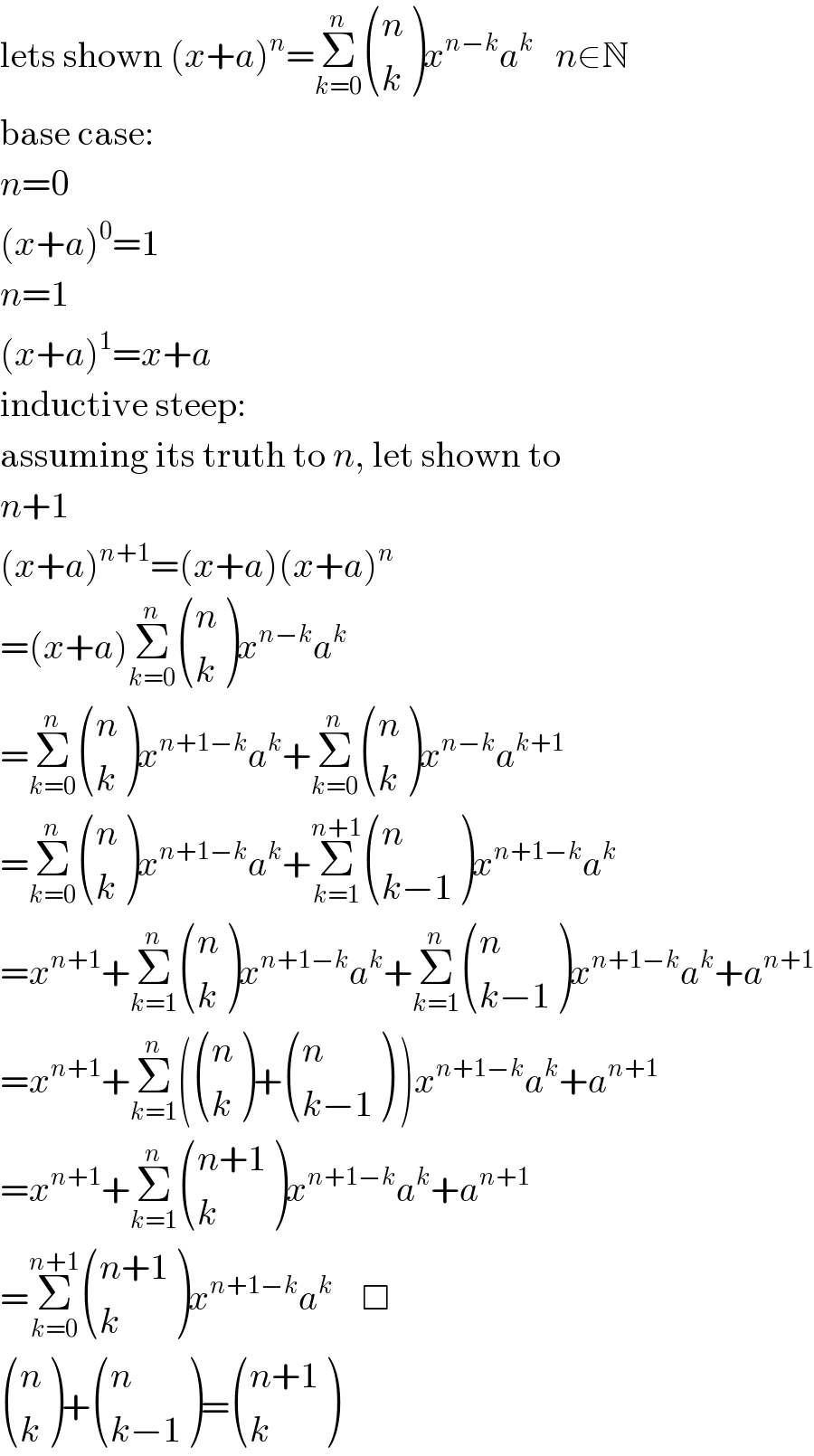
Commented by Yozzi last updated on 13/Dec/15
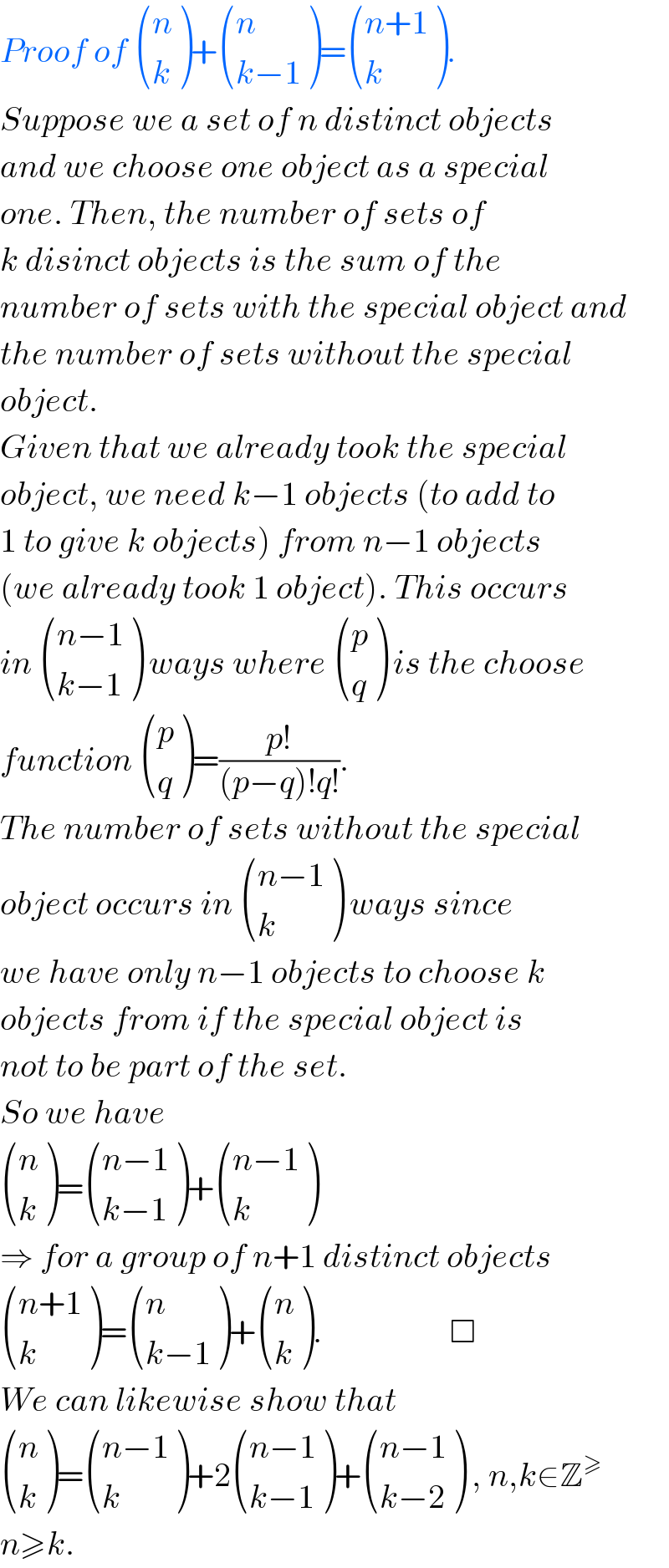
Answered by Yozzi last updated on 13/Dec/15
![(x+a)^v =(a{1+(x/a)})^v (x+a)^v =a^v {1+(x/a)}^v Here, I assume that v∈Z^≥ . a≠0 (Z^≥ ={non−negative integers}) The choose function is given as ((n),(r) ) as the number of ways of choosing r objects from n distinct objects. Of course we have {1+(x/a)}^v =(1+(x/a))(1+(x/a))(1+(x/a))...(1+(x/a)) (v times) Here you have v brackets with (x/a) in each of them so that powers of (x/a) can arise in a number of ways as a consequence of picking brackets to multiply with each other to give the sought after power of (x/a). ((x/a))^v : To obtain this term, you have v brackets to choose (x/a) from and this is done in ((v),(v) ) ways. So, ((x/a))^v occurs ((v),(v) ) times and thus the term in ((x/a))^v is ((v),(v) )((x/a))^v . ((x/a))^(v−1) : Here it is the case that you′d like to obtain (x/a) multiplied by itself v−1 times. You have v brackets to choose from, so that this occurs in ((v),((v−1)) ) ways. Hence, the term in ((x/a))^(v−1) is ((v),((v−1)) ) ((x/a))^(v−1) . ((x/a))^(v−2) : This term arises in ((v),((v−2)) ) ways from among the brackets, so this term is ((v),((v−2)) )((x/a))^(v−2) . Continuing on, terms in ((x/a))^2 arise in ((v),(2) ) ways, terms in (x/a) arise in ((v),(1) ) ways and terms in ((x/a))^0 arise in ((v),(0) )=1 ways from among the brackets. We hence obtain in all, (x+a)^v =a^v [ ((v),(v) )((x/a))^v + ((v),((v−1)) )((x/a))^(v−1) + ((v),((v−2)) )((x/a))^(v−2) +...+ ((v),(2) )((x/a))^2 + ((v),(1) )((x/a)) +1] (x+a)^v =a^v (Σ_(r=0) ^v ((v),(r) )x^r a^(−r) ) (x+a)^v =Σ_(r=0) ^v ((v),(r) )x^r a^(v−r) □ If one approached the proof starting with ′The number of ways of obtaining the term ((a/x))^0 from {1+(a/x)}^v (x≠0) (after writting {x+a}^v =x^v (1+(a/x))^v ) is ((v),(0) )...′ you get the equivalent expression (x+a)^v =Σ_(r=0) ^v ((v),(r) )x^(v−r) a^r .](Q3432.png)
Answered by prakash jain last updated on 13/Dec/15
